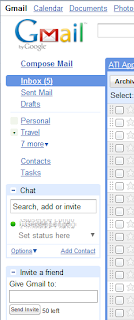I haven't posted on Blogspot for a long time for a variety of reasons but the main one is that... Blogspot is blocked in China.
Much of my work is now teaching online to students in China. During classes, I would post links to my pages on pbwiki and occasionally posts here. But it took a while before a student finally admitted "we can't see the links".
I did some research and found that both PBwiki and Blogspot are blocked in China: not just specific pages but the whole domains. They are blocked by "the Great Firewall of China", the system created by the current Communist government of mainland China to block ordinary Chinese internet users from seeing webpages with information and opinions the Communist party doesn't want them to see.
As sites like PBwiki and Blogspot allow anyone to post content, and because many have posted content the Communist party wants to block, the Great Firewall (GFW) blocks not just specific pages but everything from these sites.
So I looked into some alternative free website creation/hosting services and found Weebly. I checked that it wasn't blocked in China (it's not... so far). So I created a Weebly site, started migrating my PBwiki stuff over there and also blogging there (posts intended for students, not teachers). And I kind of forgot about Blogspot.
I might continue posting here about issues relevant to teachers and keep Weebly for my students.
So teachers, if you're dealing with China, remember to check that any resources you use are accessible there. Here's some info:
- UPDATE (2011-03-29) GreatFirewall.biz. Found a great website focused on providing info about this issue. You can check if a site is available in China, read news on this issue, find tools to get around the GFW and more.
- WebsitePulse - Website Test behind the Great Firewall of China - input a website address and see if it's available behind the Great Firewall of China (a.k.a. GFW, Golden Shield Project)
- Wikipedia - List of websites blocked in the People's Republic of China
- Some notable sites that are blocked in China: Facebook, Youtube, Twitter, Dropbox











